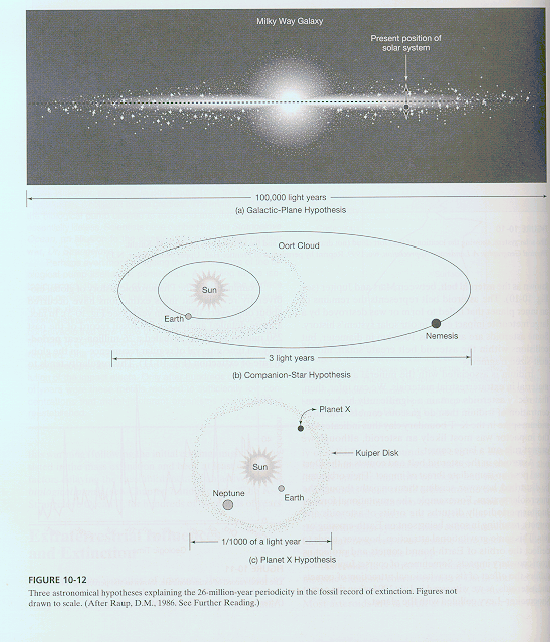
Disasters
Comets are essentially large, dirty snowballs
- They are composed of solidified compounds that exist on Earth as gases (like water, Ammonia, Methane, and CO2)
- Comets are in stable orbit around the sun, beyond Pluto
- A region known as Oort cloud
Asteroids
- They are composed of minerals and metallic elements. Characteristics of Earth and other inner-solar-system planets (Mars, Mercury, Venus)
- Orbiting around the sun in a region called Asteroid Belt between Mars and Jupiter
- They represent a remains of inner planet that failed to form or was destroyed by a large meteorite impact
- Iridium is associated with mineral and metallic material in extraterrestrial materials
- Sometimes, the asteroids and comets are disturbed by Jupiterís gravitational force, resulting in some being sent to inner planets
- Mass extinction accurse in 26 million years time intervals
Three hypotheses explaining why there is 26 million time interval
- Galactic plane hypothesis
- The oscillation of our solar system back and forth through the dense central plane and the spiral arm of the milky way galaxy-this leads to interaction with interstellar clouds of gas and dust which could disturb the orbits of asteroids and comets in the Oort cloud sending some on Earth-crossing orbit
- Companion-star hypothesis
- Sun has a companion star equal to 10 2/0 of its mass, (Nemesis) it presumed to be highly elliptical orbit that passes through the Oort cloud every 26 million years
- The planet X hypothesis
- A disturbance of another cluster of comets called Kuiper disk, its thought to exist outside the orbit of Neptune where planet X refers to any planet outside Pluto



